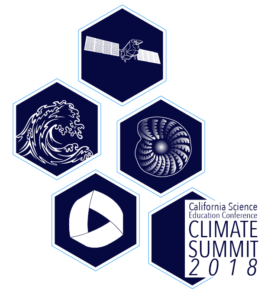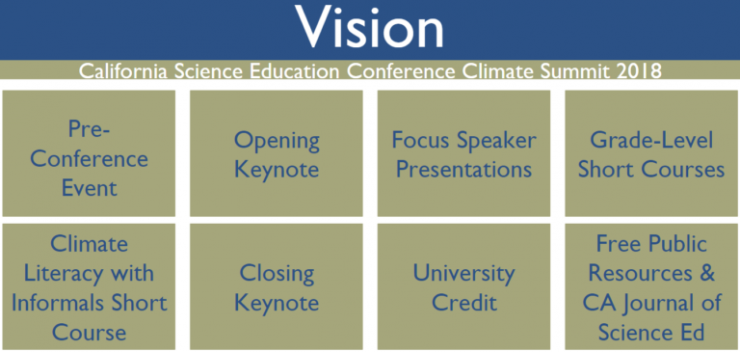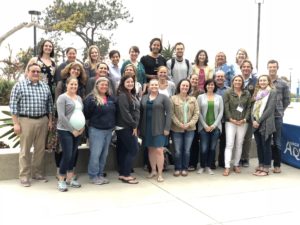Environment
As teachers dig deeper into the NGSS and move past the newness of the dimensions, engineering, phenomena, etc., there’s a beautiful segment in them that begins to illuminate. It becomes immediately apparent there are strong connections between the standards and science ideas surrounding the environment and, specifically, environmental issues. Considering the big shift in the NGSS to “All Standards, All Students,” framing instruction around the environment helps to bring relevancy and the real world aspect of science front and center for students. In the process, it has great potential to break down equity and access barriers, accomplishing that thing we hope for in K-12 education: building scientific literacy so kids grow up to be informed citizens that can make important decisions for their families, communities, and as a voter. It’s like that “golden ticket” that allows things to come together easily. Fortunately, there are tangible environmental issues everywhere you and your students might have access; cities have them, rural communities have them, even the burbs.
Reviewing the standards closely, one environmental issue of great importance that kept blinking its golden hue at me is understanding climate change and the relationship between humans and climate change. Climate impacts us, and we impact climate. I think it was John Muir who said it best, “When we try to pick out anything by itself, we find it hitched to everything else in the Universe.” We are, of course, intertwined with our environment. If you can pause for a moment, and really consider what is happening around you, it’s easy to see that things in our world are changing as a result of many factors including climate change and, in many cases, exacerbated because of climate change. Where I live in Southern California, reports of King Tides are more common than ever thanks not just to tidal forces, but thermal expansion of water increasing the effects. Coastal cities are bracing for trillions of dollars in damage to infrastructure with projections of further water expansion/sea level rise. We have a fairly large uptick in the numbers of young-of-year and juvenile white sharks seen across months that can, in part, be attributed to the duration of warmer coastal waters extending well beyond the traditional warm months of August and September, making the water cozy enough for the babies to linger, a big behavioral change. Fire “season” is pretty much year round now. Even though we had substantial rainfall the year before last, we are still in drought lock-down for water use. Then there’s the inevitable collapse of biodiversity.
A friend of mine, Dr. Mas Dojiri, Assistant Director of LA Sanitation, a board-certified environmental scientist, and an expert in marine invertebrates, is currently working with a team of scientists on a plan to enhance the biodiversity within the city of Los Angeles. His research shows that biodiversity (impacted, in part, by climate change) is the actual critical global issue because, in his words, “Humans are doomed without biodiversity. All the vital ecosystem services, e.g., fertile soil, clean air and water, pest and disease control, nitrogen, oxygen, and carbon cycle, enhanced mental health and well being, and reduction of impacts to climate change that are necessary for our existence are associated with biodiversity. The danger is real and potentially immense: loss of fisheries, more plastics than fish in the ocean, extensive loss of hard-shelled mollusks, such as abalone, clams, oysters, mussels, and pteropods, and a loss of hard corals are all predicted by mid-century. Most of the biomass of the Earth consists now of humans and domesticated animals, only 3% of the living animal world biomass is wildlife. We must come together and save our planet before it’s too late.”
Lack of biodiversity and subsequent variation doesn’t bode well, especially in light of the context of a changing climate.
As people come to understand, we experience the sort of cognitive dissonance that needs time to work itself out. There is much to understand and grapple with when it comes to this topic, but we are at a stage of knowledge building now where it’s time to start moving forward.
“All truth passes through three stages. First, it is ridiculed. Second, it is violently opposed. Third, it is accepted as being self-evident.” -Arthur Schopenhauer

Moving forward means supporting teachers in empowering the next generation of global citizens. Fortunately, we have some good guidance and resources for how to help students understand much of this and partnerships with informal science centers (like aquariums, natural history museums, zoos, nature centers, and even local gems like LA Sanitation!) make that even stronger. Our California Environmental Principles and Concepts, which marry beautifully with the NGSS, when explicit in instruction, help to build student awareness of that powerful relationship between humans and the natural world. Working with many teachers across many different settings over the past few years, the one stumbling block I continue to notice for them in discussions on environmental issues are the challenges specifically relating to climate change. For many, this was not a formal part of degree programs, and it is a “new” subject for California teachers in the NGSS.
Realizing that this was an area that teachers needed multiple areas of support in, CSTA began a journey of planning out how to be a part of that support system. Ideas manifested into an embedded theme for the 2018 California Science Education Conference: Climate Summit.
The summit goals are to enrich the experience and expertise of teachers by providing opportunities to strengthen content knowledge, receive support for teaching climate science at their grade level, and providing support for teachers to use resources from informal settings to enhance climate instruction. The vision for the summit is as follows:

The Climate Summit kicks off with the pre-conference event on Thursday, November 29th and continues with programming throughout the California Science Education Conference. For details, check out the Climate Summit page. We are privileged to have so many distinguished scientists and educators come together to support teachers.

This programming wouldn’t be possible without the hard work of our partners from Scripps Institution of Oceanography, NASA’s Jet Propulsion Lab, the CA NGSS K-8 Early Implementation Initiative and the K-12 Alliance @ WestEd and support from S.D. Bechtel, Jr. Foundation, Ten Strands, the Environmental Literacy Steering Committee, and the California Science Project.
It’s our sincere hope that this will provide a well-rounded experience for teachers to further bring together the vision of the NGSS and the EP&C’s and to better understand our dynamic world. Join us in moving forward, strengthening our capacity to bring environmental literacy to the next generation. We look forward to helping you empower students in that golden vision of making a positive change in the world.






